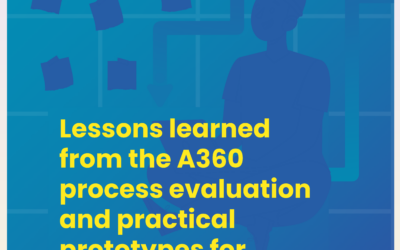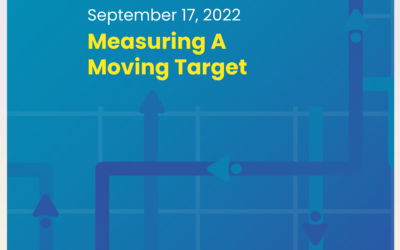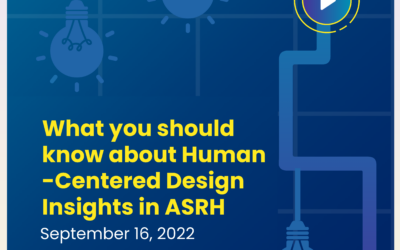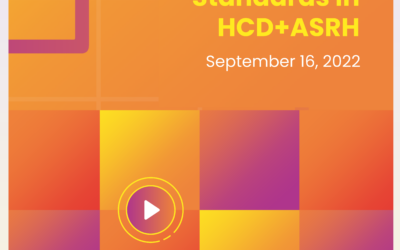Purpose
Presenters
Ilana Cohen
Grassroots Soccer
Mary Phillips
Adolescents 360
Ronard Lubaga
HCDExchange
Sahil Tandon
The David and Lucile Packard Foundation
Creativity and agility are key to successfully generating adolescent insights for ASRH using human-centered design – Ilana Cohen
Insights
- Sports and games present creative avenues for exploration and help young people achieve the comfort levels and emotional safety necessary to share their experiences on ASRH topics.
- Grassroot Soccer leverages soccer to reach adolescents with critical information about their SRH rights and available services.
- HCD and participatory techniques can help ASRH implementers avoid a top -down approaches while allowing young people to freely express themselves. This means enabling youth to reveal viewpoints that can help implementers structure responsive ASRH programming grounded in appropriate social context and authentic connections to the young people they serve.
Importance of relatable content and channels for successfully reaching youth in HCD research – Ronard Lubaga
Insights
- Collecting insights from young people and designing interventions with them requires content and engagement channels that are accessible and relatable. The language, tone, and even visual appeal of the communication materials used to help young people understand the subject of the research and the interventions that follow are critical to achieving participation and buy-in.
- Ronard Lubaga highlighted the importance of choosing appropriate delivery channels informed by a thorough understanding of the social context, economic background, and diversity of the target group. He also reiterated the importance of tailoring messages on ASRH when dealing with key populations – recognizing that their experiences fall outside mainstream discourse on SRH and require targeted interventions that factor in the unique marginalization such youth might face.
Insight gathering beyond research and discovery: An evolving process that goes throughout the project cycle – Mary Phillips
Insights
- Often we think of insights as being the preserve of the initial stages of the HCD process, particularly in the discovery phase where designers empathize with users and try to understand their challenges to form the basis of the entire intervention design.
- However, insights can evolve and new ones can emerge as the project advances — unveiling further opportunities for design or necessitating a shift in the approach of an intervention.
- Designers therefore need to remain alive to the possibility of unexpected insights emerging at any stage of the project and leave room to adapt their strategies in case something consequential is revealed as the project progresses.
Upholding rigorous standards of ethics in design research is especially important when dealing with adolescents – Sahil Tandon
Insights
- Ethics in design research safeguard the wellbeing and safety of participants and assure the quality and integrity of the findings. Ethics are important when dealing with adolescents who are vulnerable due to age, limited legal agency, economic dependency, and other psychosocial factors.
- Ethics can be viewed as being grounded in three main principles: respect, beneficence, and justice. HCD is particularly well positioned to honour these principles through practices it already prioritizes, such as obtaining consent, ensuring safety and privacy of research participants, elevating participant voices, fostering inclusion and incorporating community feedback.
- There still remains a need to be vigilant with respect to ethics even when using HCD for ASRH research. HCD relies heavily on ethnographic documentation through photo, video, and audio. Participants highlighted that these practices have the potential to pose ethical challenges particularly in relation to how such ethnographic data is managed and shared, how that data is used to create impact, and how the ensuing research is communicated.
What does it mean to have insights continually at the back of your mind throughout the cycle? Is it important to have that?
“It is imp to have insights provide value throughout the whole process and particularly through prototype testing. We can think about how that insight was ultimately used to drive decisions. We lose a lot of nuance and value if we look at an insight the way it was just written at the beginning rather than how it ended up growing, evolving and impacting your program as a component and context of the program.”
– Mary Phillips
What is the diff bet using an hcd approach and a conventional approach in finding insights through research?
“We work in partnership. Our programs are collaborative and iterative. We design and contextualize our programs to the communities our youth are in with our partners. There is no one-size fits all approach. HCD insights compared to traditional ones: HCD insights put people at the center and are not top-down. They recognise youth as diverse and autonomous as right holders. Non-HCD insights tend to assume on the behalf of stakeholders. HCD allows youth to fully express themselves. HCD has allowed grassroots soccer in Malawi to discover needs from youth that they had not previously envisioned, which allowed them to pivot to what the youth demanded”.
-Ilana Cohen
Follow-up Questions
- Is HCD something that we can do halfway if not fully? Definitely. If you can’t go big, start lite, but make sure you complete the circle where the participants also see the result of their/your actions. Make sure whatever you are doing is not just taking, but a continual loop.
- What is the difference between behavioural science and HCD? In HCD, the initiation is solving a problem. Through the process we may find new knowledge that may allow us to solve the problem in a creative way. In behavioural science, the aim may not be to solve a problem, but just the seeking of new knowledge. Empathy is a key component of both of them, but the aims may differ.
- The accepted ethical practice in our target communities may not be common knowledge to us. How do you approach field visits in this light? Ethics is always evolving. Through our practice we try to bring change so we do try to engage with and get through accepted ethics. Foundational research and landscape analysis help us define the norms and communication standards. Finding local guides who are familiar with the customs of the community is also helpful, as these things may not always be detailed out on the internet or any documentation.
- How do you avoid pitfalls around privacy when designing for sensitive topics? We know that there is a time limit, but try not to rush the process, especially during interviews. Trust the process and go with the flow. By rushing the process, you are invading privacy by focussing only on what you want to know. This will also let others open up and slowly share their privacy with you.
Key Takeaways
- Let’s not shy away from ethics. It is not only for academia, and we should work to integrate it into our HCD processes beyond the existing structures.
We who have these platforms should be inclusive and reach out to marginalised populations so that they can access space to be briefed, brief others, create solutions and find opportunities to make solutions for themselves. - Insights continue to grow beyond the initial research phase and we all approach every interaction with clients, funders, participants with a desire to make a product better for them.
- HCD is iterative and a constant feedback loop. There are touch points for MYE across the process. While they should be built into programming, there are many ways to build it into existing programs for richer more responsive programs provided it is done responsibly.




